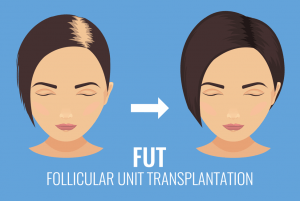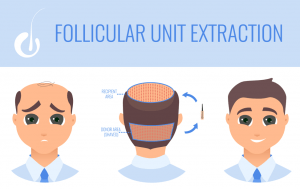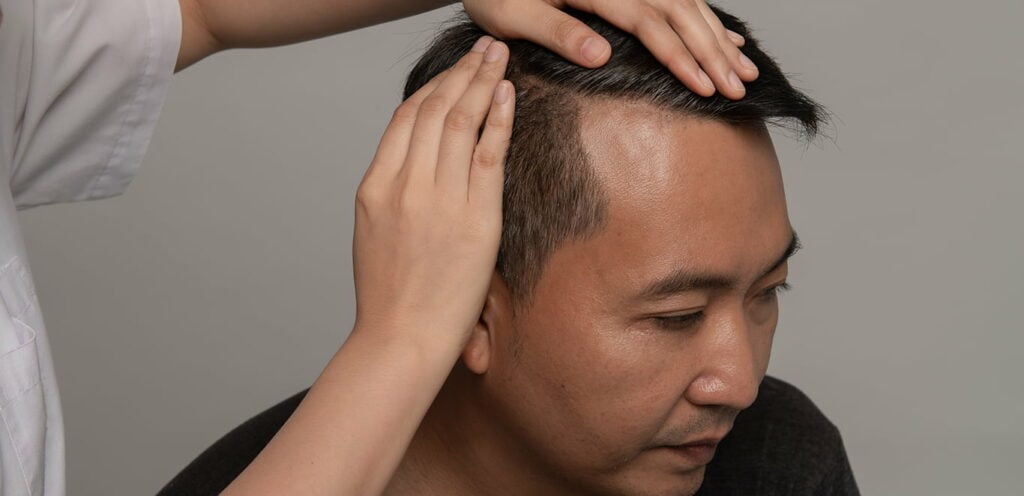What is a Hair Transplant?
The decision to undergo a hair transplant is not an easy one, nor it shouldn’t be taken lightly. Patients should know all the pros and cons of different hair transplant procedures. So, they can make careful and informed decisions. More importantly, should they also know what is hair transplant?
Besides, they should also consider their own specific goals. Above all, what they hope to achieve by undergoing the procedure. Having a specific goal in mind serves as a guide during your decision-making process.
What is Hair Transplant?
A hair transplant is a minimally invasive cosmetic procedure to treat hair loss. Also, it increases the hair density of a balding scalp. The hair transplant surgeon will remove hair follicles from the donor area. Then, they will transplant it to the scalp with thinning hair.
Hair transplant procedures have come a long way and benefited from innovations. It helps hair transplant surgeons in creating completely natural-looking transplanted hairlines.
There are still pros and cons associated with hair transplants. Even so, there are many advancements and pioneering techniques used. Thus, prospective patients should be aware of these things. Also, they should understand the various pros and cons of hair restoration.
Once they understand what a hair transplant is, then, they can make an informed decision. Also, this helps them ensure they will achieve the specific outcome they are seeking.
Different Types of Hair Transplant
Losing your hair is like losing your self-esteem as well. That is why many patients want to undergo hair restoration treatment. This is due to the reason that they want to restore their sense of confidence.
With new procedures and technologies, hair transplants can successfully create a natural-looking hairline. Various hair restoration methods allow you to achieve a thicker and full head of hair. This hair transplantation method includes:
The transplanted hair blends seamlessly with the patient’s naturally occurring hair. This is because the procedures rely on donor tissue taken from the actual patient.


What is Hair Transplant: The Procedures
There are a few cons associated with hair restoration procedures. Notably, the majority of these drawbacks relate to the patient’s expectations.
What is a hair transplant does not mean that it will restore the hairline they have during their early 20s. Moreover, it will not restore the hair density they have during their younger years. Also, it is unlikely that progressive hair loss will be able to stop through a hair transplant.
Thus, the surgeon will not recommend it until the patient’s hair loss has stabilized. Moreover, these hair transplant doctors have hair transplant clinic in:
- New York City
- Greenwich
- Connecticut
- Chicago
- Illinois
- Washington D.C.
- Northern Virginia
- Houston and Dallas, Texas
- Manila, Philippines
- Dubai and Abu Dhabi, U.A.E.
- Karachi, Pakistan
Patients should know that a hair transplant aims to improve the existing hairline. It also improves hair density while using the patient’s limited supply of donor tissue.
So, a patient with suitable expectations is far more likely to be satisfied with the outcome. That is because they know what a hair transplant can and cannot achieve. During the initial consultation, the patient should ask any questions about hair transplants. By doing so, the doctor will be able to outline what procedure is right for the patient.
At that time, the doctor will be outlining the limitations tied to each procedure as well. Thus, it will help the patient understand what to expect with the procedure.
Benefits of Hair Transplants
The benefits of hair restoration are difficult to quantify. This is because many patients undergo hair transplants to gain back their self-esteem.
An improved hairline and a thicker head of hair contribute to a more youthful appearance. For that reason, a hair transplant influences their confidence and boosts self-esteem. Thus, it can generate untold benefits of hair transplantation. Also, this includes a multitude of aspects of one’s personal and professional life.

Who are the Patients need Hair Loss Treatments?
Patients report feeling energized after experiencing the improvements from the procedure. Also, they often feel that they enjoy an increase in positive interactions with:
- Friends
- Family
- Colleagues
- Acquaintances
- Strangers
Who are the best candidates for hair transplants?
Anyone experiencing hair loss can be a good candidate for hair transplants. Potential patients that work from sales and marketing can be a candidate as well.
Moreover, patients from different countries around the world are eligible for hair transplants. This includes places like:
- New York City
- Greenwich, Connecticut
- Chicago, Illinois
- Washington D.C.
- Northern Virginia
- Houston and Dallas, Texas
- Manila, Philippines
- Dubai and Abu Dhabi, U.A.E.
- Karachi, Pakistan
There is little or no evidence revealing the fact that a patient undergoes the procedure. So, the patient can choose who they wish to inform about undergoing a hair transplant. This is especially the case with procedures like FUE. FUE offers a no-scar, no-suture hair restoration technique.
Even with FUT, the scar is less noticeable. The small horizontal scar that is left behind can be easily obscured by the patient’s hair.
The brief recovery period associated with both FUE and FUT is also beneficial to the patient. After a hair transplant, there will be little to no interruption to the patient’s schedule. Following FUE, the patient can return to normal activities the next day.
But in a FUT hair transplant, the patients will need to tone down in their activities. Yet, it will be no more than a few days before they can resume regular activity. Thus, it’ll take a few weeks before a patient can resume doing strenuous activity.
What is Hair Transplant: The Limitations
Are you weighing the pros and cons of a hair transplant procedure? First, you must understand that there are limitations to what these procedures can do.
Since there are limitations, the patient’s big expectations may be hard to achieve. As such, they are likely to be unhappy with the work of even the most exceptional hair transplant surgeon.
So, it is vital to clearly understand what a hair transplant can and cannot do before making a decision.
What is a hair transplant surgery and how does it work?
In a hair typical transplant procedure, the surgeon will use hair from the patient’s donor site. They do this to generate an appropriate amount of coverage in the recipient site. The recipient site is the place in which hair loss or thinning hair is most clear.
How to achieve adequate coverage with a limited supply of DHT-resistant donor tissue?
To do this, the hair transplant surgeon needs to restore 25% of the total hair follicles. This hair graft otherwise is naturally growing in the donor tissue.
Hair transplant doctors around the world use this 25% figure. Since 25% has shown to create more than adequate coverage in areas affected by hair loss. Moreover, the surgeon will not need to overuse the available donor tissue.
What do we aim for in this surgical procedure?
The primary goal of a hair transplant is to improve the patient’s existing hairline. Also, this is to enhance the density of the patient’s hair. Patients shouldn’t expect their hairline and hair density will be completely restored. Thus, the shape, form, and hair volume while they wear young will not be the same though.
So, the patient should have appropriate expectations when considering a hair transplantation procedure.
What to Expect After a Hair Transplant?
During the initial consultation, the surgeon will discuss everything with the patient. Thus, they will cover what you should expect throughout every stage of the process. This includes the:
- Pre-operative stages
- Post-operative stages
Notably, these post-operative expectations will depend upon the specific hair transplant procedure. This is due to the reason that the recovery process of FUE is different from FUT. Also, the patient must follow the instructions that the doctor provides.
Otherwise, there is a negative impact on the overall efficacy of hair restoration. Surely, you wouldn’t want that to happen after your hair restoration treatment, right? That is why you should not ignore the doctor’s post-operative guidelines.

What is Hair Transplant: The Maintenance Process
After completing the FUE hair transplant, patients can expect a quick recovery process. Thus, they will be able to resume normal activities on the day after the procedure. This is because the FUE hair transplant procedure is a no linear scar and no-suture procedure.
However, the FUT procedure will need a slightly longer recovery process. So, many patients take one or two days off following the completion of the procedure. After a few days of taking it easy, the patient can resume their normal activities. However, they should still exercise a bit of extra caution during the first week to 10 days.
In both procedures, the patient can expect the transplanted hair to fall out after 2-3 weeks. Moreover, you don’t have to panic seeing your hair is shedding. Falling out transplanted hair is completely normal and is no cause for concern.
Within the first 2-4 weeks after the procedure, the transplanted hair will start to fall. Usually, 10%-15% of these hairs will be in the “SHEDDING” phase. Don’t think that your hair follicles are damaged, that’s why your hair is falling out. It naturally happens because it is making way for the new hairs to grow.
Also, expect that the transplanted grafts will begin to grow new hair after about four months. Thus, these new hair growths are stronger, healthier, and thicker.
So, the patient can have a clear idea about the coverage the hair restoration has yielded after 6 months.
What is Hair Transplant: THE SIX-MONTH MARK
Do you want to achieve greater hair density? Then, the ideal time to know if you need additional sessions is 6 months after the procedure.
If you want to undergo multiple FUT sessions, 6 months is also the appropriate time to meet your doctor. By that time, your hair transplant surgeon can make a plan for your next FUT hair transplant sessions.
When you are seeking big improvements to the volume of your hair, 1-2 sessions should be enough. Still, the transplanted hair needs to grow after the initial procedure. So, the doctor can decide whether your session is really enough.
What kind of results should I expect?
Hair restoration is capable of improving the overall appearance of one’s hair. This is through the enhancement of the existing hairline. As well as, through the density added to areas in which hair loss or thinning hair has become noticeable.
Yes, it is possible to achieve marked improvements. Patients should also know that there are limits to what the procedure can achieve. Thus, they should set realistic expectations based on those limits.

Also, few factors will determine the result of a hair transplantation procedure. The amount of viable donor tissue will play a significant role in how much the procedure can cover.
Also, some patients may not have enough DHT-resistant donor tissue. Thus, they cannot generate the level of coverage the patients need. Even if there’s enough tissue available, the patient is not willing to have many sessions.
Thus, many factors will influence the possible results the surgery can achieve. Despite that, patients can still expect to see the results outlined by their doctor. Patients can discuss their specific goals with the doctor during the initial consultation. Also, this is the time to know how to go best about achieving these goals.
Contact Hair Loss Specialist near You
Many factors will influence the possible results hair transplantation can achieve. Despite that, patients can still expect to see the results outlined by their doctor. Patients can discuss their specific goals with the doctor during the initial consultation.
Your hair transplant surgeon may recommend strategies to supplement the surgical procedure. Also, the hair transplant can be in conjunction with a non-surgical hair transplant procedure. FUE and FUT may enjoy the use of a topical solution once the grafts have taken root. Also, some patients have achieved the coverage they are seeking. They achieve this with a hair transplantation procedure together with a scalp micropigmentation.

